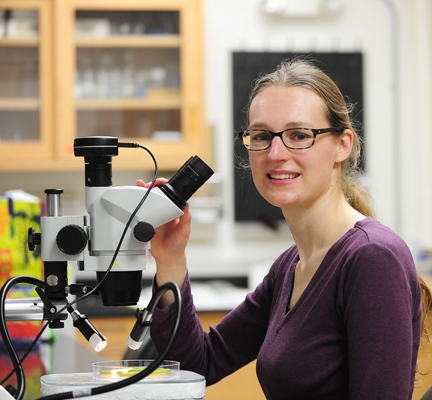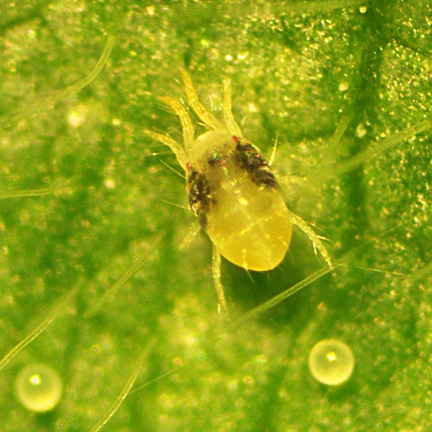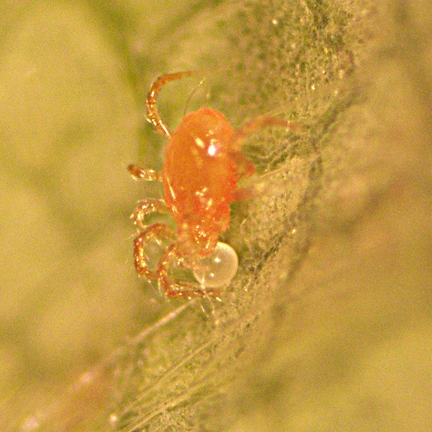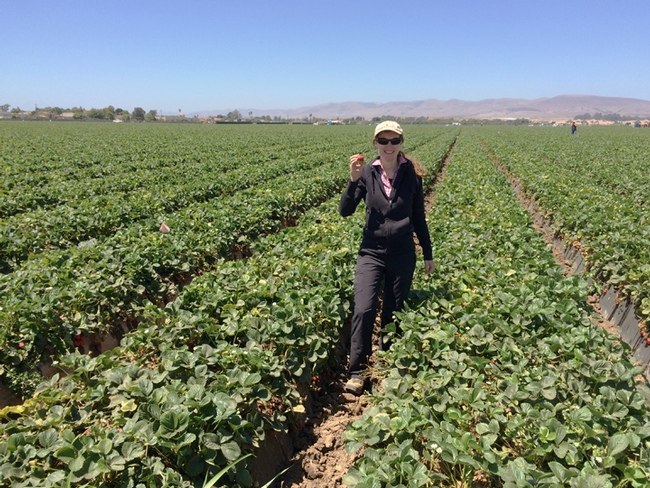- Author: Kathy Keatley Garvey

Chemical ecologist Elvira Simone de Lange, a postdoctoral researcher in the Christian Nansen lab, UC Davis Department of Entomology and Nematology, has received a three-year $249,878 federal grant that involves using drones to detect the early infestation of spider mites, and then targeting the pests with biocontrol agents.
The grant is from the U.S. Department of Agriculture's Western Sustainable Agriculture Research and Education (SARE) Program.
Her research project, "Unmanned Aerial System (UAS)-Guided Releases of Predatory Mites for Management of Spider Mites in Strawberry," aims to identify “very subtle differences in reflectance of the strawberry canopy, indicating spider mite-induced stress,” she said. “Releasing predatory mites in these spider mite hotspots will increase their efficacy as biocontrol agents, enhancing sustainability of spider mite management practices in strawberry.”
In her successfully funded proposal, she noted that “Farmers are requesting in-depth testing of how UAS can be integrated successfully into strawberry production to improve management practices.” UAS, or drones, can monitor large areas in a short period of time. California produces 88 percent of the nation's strawberries, with an annual value of approximately $2.6 billion.

The three-year project, now underway through March 2020, also explores the use of drones as a novel, effective way of distributing the predatory mites.
The grant also calls for educational outreach programs, with hands-on workshops and lectures on spider mite sampling at grower and agriculture professional meetings throughout the California strawberry growing region. Growers outside this area will be reached through publications in trade journals and other grower media.

Multiple species of spider mites infest the state's strawberry fields. The twospotted spider mite, Tetranychus urticae, an annual pest of strawberries in all growing regions, is the predominant species in strawberries grown on the Central Coast, according to the UC Statewide Integrated Pest Management Program's Pest Management Guidelines (PMG), written by lead author and IPM specialist Frank Zalom, distinguished professor of entomology, UC Davis Department of Entomology and Nematology.
The mites suck plant juices. The damage can result in decreased fruit size and yield. Mite-feeding symptoms include dense webbing, and dry, brittle and discolored leaves.
“Twospotted spider mite feeding is particularly damaging during the first two to five months following transplanting in late summer or fall,” according to the PMG.
A native of The Netherlands, de Lange joined the Nansen lab in March 2016. She received her bachelor's degree in biology, and her master's degree in plant biology from Utrecht University, The Netherlands. She earned her doctorate in chemical ecology from the University of Neuchâtel, Switzerland. Her first postdoctoral position was at Rutgers University, New Jersey, where she worked on insect resistance in cranberries.
Overall, she hopes her research meshing chemical ecology, entomology, plant-arthropod interactions and biological control in the fields of integrated pest management and precision agriculture solutions, will “lead to the development of novel, sustainable pest management practices.”




